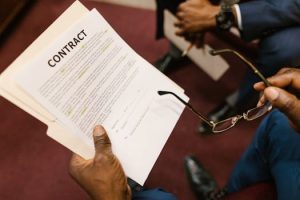From Plessy to Brown: The Legal Journey to Desegregation
In 1892, Homer Plessy, an African American, boarded a train and took a seat in the designated “whites only” section. He knew that his actions would lead to his arrest, but he did it to challenge the unjust segregation laws in the United States. This act of civil disobedience sparked a legal battle that lasted for over six decades and culminated in the landmark Supreme Court case, Brown v. Board of Education. The ruling in this case marked a turning point in the fight against racial discrimination and paved the way for desegregation. Let’s take a look at the legal journey from Plessy to Brown and the significant events that led to desegregation in the United States.
Plessy v. Ferguson: The “Separate but Equal” Doctrine
In 1896, the Supreme Court delivered its decision in the case of Plessy v. Ferguson. The court upheld the Louisiana law that required separate railway cars for blacks and whites, as long as the facilities were deemed “separate but equal.” This ruling was a major blow to civil rights as it paved the way for segregation laws to be implemented in many states. The “separate but equal” doctrine became the legal justification for discrimination and segregation in all aspects of public life, including schools, transportation, and housing.
The NAACP and the Fight for Justice
In 1909, a group of African-American activists, including W.E.B. Du Bois and Ida B. Wells, formed the National Association for the Advancement of Colored People (NAACP). The organization’s primary goal was to fight for racial equality and put an end to segregation. Over the years, the NAACP used a combination of direct action, lobbying, and legal strategies to challenge discriminatory laws and practices.
The Brown Case: A Challenge to the “Separate but Equal” Doctrine
In 1950, the NAACP took on a case that would change the course of history. A group of parents, led by Oliver Brown, filed a lawsuit against the Board of Education of Topeka, Kansas, on behalf of their children who were denied admission to all-white schools. The plaintiffs argued that segregation in schools violated the 14th Amendment’s Equal Protection Clause, which guarantees equal treatment under the law. The case, known as Brown v. Board of Education, was heard by the Supreme Court in 1952.
Supreme Court’s Unanimous Decision: Segregation Is Unconstitutional
In 1954, the Supreme Court delivered its unanimous decision in the Brown case, stating that segregation in public schools is inherently unequal and a violation of the 14th Amendment. Chief Justice Earl Warren wrote in the opinion, “Separate educational facilities [for blacks and whites] are inherently unequal.” This ruling overruled the decision in Plessy v. Ferguson and marked the end of the “separate but equal” doctrine.
The Aftermath: Desegregation of Schools and Beyond
The Brown ruling did not end segregation immediately, but it paved the way for desegregation across the United States. In the following years, many schools became integrated, and civil rights activists continued to push for equal rights and an end to discrimination in all areas of life. In 1964, the Civil Rights Act was passed, and in 1965, the Voting Rights Act was signed into law, further strengthening the fight against racial discrimination.
Conclusion
From Plessy to Brown, the legal journey to desegregation was a long and hard-fought battle. The landmark ruling in Brown v. Board of Education showed that the legal system could be used to bring about social change and put an end to the unjust “separate but equal” doctrine. This case also set a precedent for future battles against discrimination and helped pave the way for a more just and equal society in the United States.










